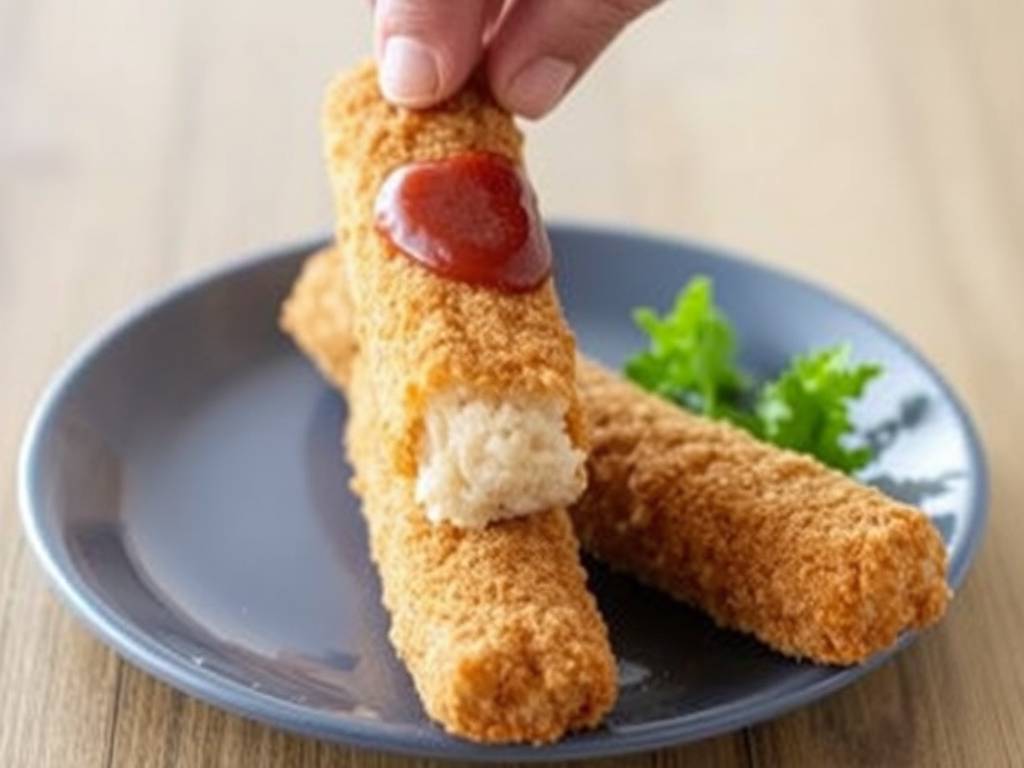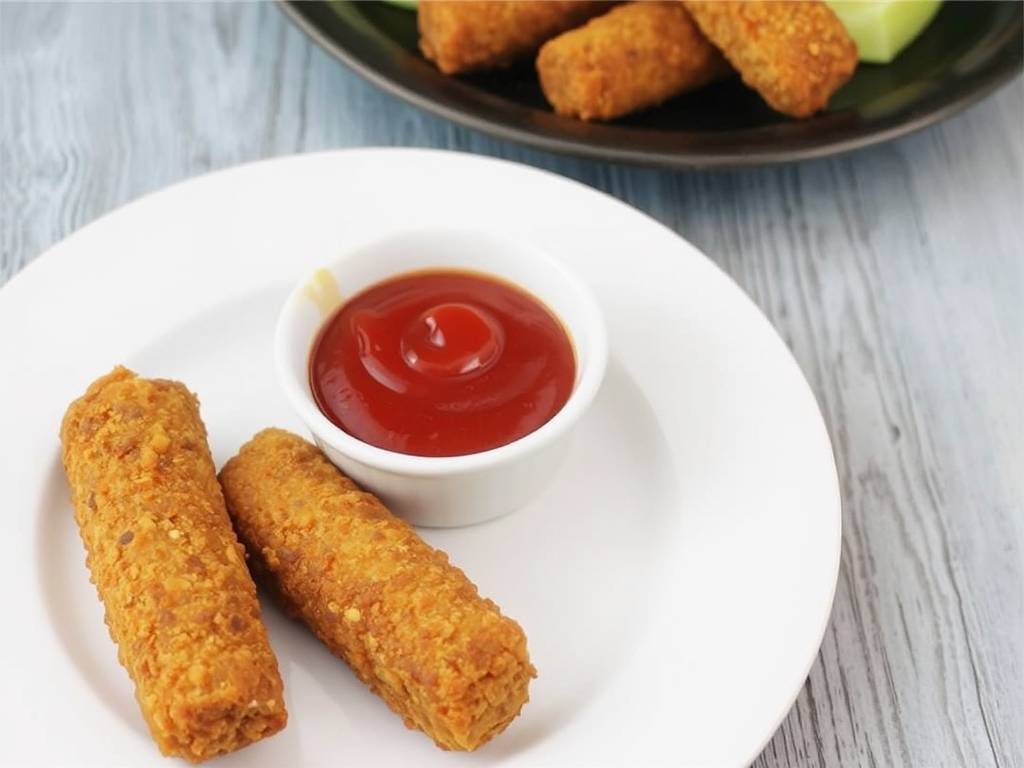Crispy Homemade Fish Sticks with Tangy Ketchup: A Step-by-Step Guide to Family-Friendly Dining
There’s something universally comforting about biting into a golden, crispy fish stick paired with a dollop of tangy ketchup. Whether you’re cooking for picky eaters, planning a quick weeknight dinner, or simply craving a homemade version of this classic favorite, learning how to make fried fish sticks with ketchup from scratch is a game-changer. Forget the frozen aisle—this recipe delivers flaky, tender fish encased in a crunchy coating, all complemented by the sweet and zesty kick of homemade or perfectly paired ketchup. In this guide, we’ll walk through everything from selecting the right fish to crafting a dipping sauce that elevates the entire experience.
Why Make Fish Sticks at Home?

Store-bought fish sticks can be convenient, but they often lack the freshness and flavor of a homemade version. By making them yourself, you control the ingredients—opting for sustainable fish, avoiding unnecessary additives, and tailoring the seasoning to your taste. Plus, involving the family in the preparation can turn cooking into a fun activity. The satisfaction of creating crispy fish sticks with a flavorful crust and pairing them with a rich ketchup dip is unmatched. Let’s dive into the essentials.
Choosing the Best Fish for Your Sticks
The foundation of great fish sticks lies in the fish itself. While many commercial brands use processed white fish, you can elevate your dish by selecting high-quality fillets. Cod, haddock, or tilapia work wonderfully due to their mild flavor and firm texture that holds up well during frying. For those interested in sustainable seafood options, look for Alaskan pollock or U.S.-farmed tilapia, which are eco-friendly choices. If you prefer a richer taste, salmon can be a delicious alternative, though it may require slight adjustments in cooking time.
When preparing the fish, ensure it’s thoroughly pat-dried with paper towels. Excess moisture can lead to a soggy coating, so take your time here. Cut the fillets into even strips, about 1-inch wide and 3-inches long, to ensure uniform cooking. This step is crucial for achieving that ideal crispiness.
Creating the Perfect Coating for Crispy Fish Sticks
The coating is what transforms simple fish strips into irresistible crunchy delights. A classic breading station involves three components: flour, egg wash, and breadcrumbs. For the flour mixture, combine all-purpose flour with a pinch of salt, black pepper, and perhaps a hint of paprika or garlic powder for added depth. The egg wash, made by whisking eggs with a tablespoon of water or milk, acts as the glue for the breadcrumbs.
Now, for the star of the show: the breadcrumbs. While plain breadcrumbs work fine, panko breadcrumbs are highly recommended for an extra-crispy texture. You can season them with dried herbs like parsley or dill to enhance the flavor profile. For a gluten-free version, almond flour or crushed gluten-free crackers make excellent substitutes. Dip each fish strip first in the flour, shaking off any excess, then into the egg wash, and finally into the breadcrumbs, pressing gently to adhere. Place the coated strips on a baking sheet lined with parchment paper and refrigerate for 15–20 minutes. This helps the coating set, reducing the risk of it falling off during frying.
Frying Techniques for Golden Perfection
Frying is what gives fish sticks their signature crunch. You can pan-fry or deep-fry, depending on your preference. For pan-frying, heat about half an inch of vegetable oil or canola oil in a large skillet over medium-high heat. The oil should reach 350–375°F (175–190°C)—if you don’t have a thermometer, test it by dropping a breadcrumb in; if it sizzles immediately, the oil is ready. Arrange the fish sticks in a single layer, avoiding overcrowding, and fry for 2–3 minutes per side until golden brown. Work in batches to maintain the oil temperature.
For a healthier alternative, baking is an option. Preheat your oven to 425°F (220°C), brush the fish sticks with oil, and bake for 12–15 minutes, flipping halfway through. While baked fish sticks are lighter, frying delivers that classic crispiness many crave. Once done, transfer them to a plate lined with paper towels to drain any excess oil.
Crafting the Ultimate Ketchup Dip
No fish stick is complete without ketchup, but why settle for ordinary when you can create a customized dip? While store-bought ketchup is convenient, a homemade version allows you to adjust the sweetness and tanginess to your liking. Start with a base of tomato paste, then add apple cider vinegar, a touch of honey or brown sugar, and a pinch of salt. For an extra zing, incorporate Worcestershire sauce, onion powder, or a dash of hot sauce.
If you’re short on time, enhance store-bought ketchup by mixing in lemon juice, smoked paprika, or finely chopped herbs like cilantro. This simple twist can make your dipping sauce feel gourmet. Serve the ketchup in a small bowl alongside the hot fish sticks for dipping.
Serving Suggestions and Pairings

Fish sticks with ketchup are versatile and can be paired with various sides to create a balanced meal. Classic options include French fries, coleslaw, or steamed vegetables. For a lighter touch, a fresh green salad with a lemon vinaigrette complements the richness of the fried fish. If you’re serving kids, consider adding sweet potato fries or macaroni and cheese to the plate.
To make it a complete dining experience, pair your fish sticks with a crisp white wine like Sauvignon Blanc or a non-alcoholic sparkling lemonade. The acidity cuts through the richness, enhancing the overall flavor.
Tips for Storage and Reheating
If you have leftovers, store them in an airtight container in the refrigerator for up to two days. To reheat, avoid the microwave, which can make them soggy. Instead, use an oven or toaster oven preheated to 375°F (190°C). Place the fish sticks on a baking sheet and heat for 5–8 minutes until crispy again. For longer storage, you can freeze uncooked, coated fish sticks on a baking sheet before transferring them to a freezer bag. They can be fried directly from frozen, adding a few extra minutes to the cooking time.
Troubleshooting Common Issues
Even experienced cooks encounter challenges. If your coating falls off, it might be due to insufficient drying of the fish or skipping the chilling step. Ensure each strip is thoroughly dried and chilled before frying. If the fish sticks are greasy, the oil temperature might be too low, causing them to absorb excess oil. Use a thermometer to maintain the correct heat. For those avoiding frying, an air fryer is a great alternative—cook at 400°F (200°C) for 10–12 minutes, flipping halfway through.
Conclusion: Enjoy Your Homemade Delight
Making fried fish sticks with ketchup at home is not just about the final product—it’s about the joy of creating something delicious and wholesome. With this guide, you’re equipped to tackle every step, from selecting sustainable fish to mastering the crisp coating and crafting the perfect dip. So gather your ingredients, put on your apron, and get ready to enjoy a meal that’s sure to become a family favorite. Happy cooking






发表评论